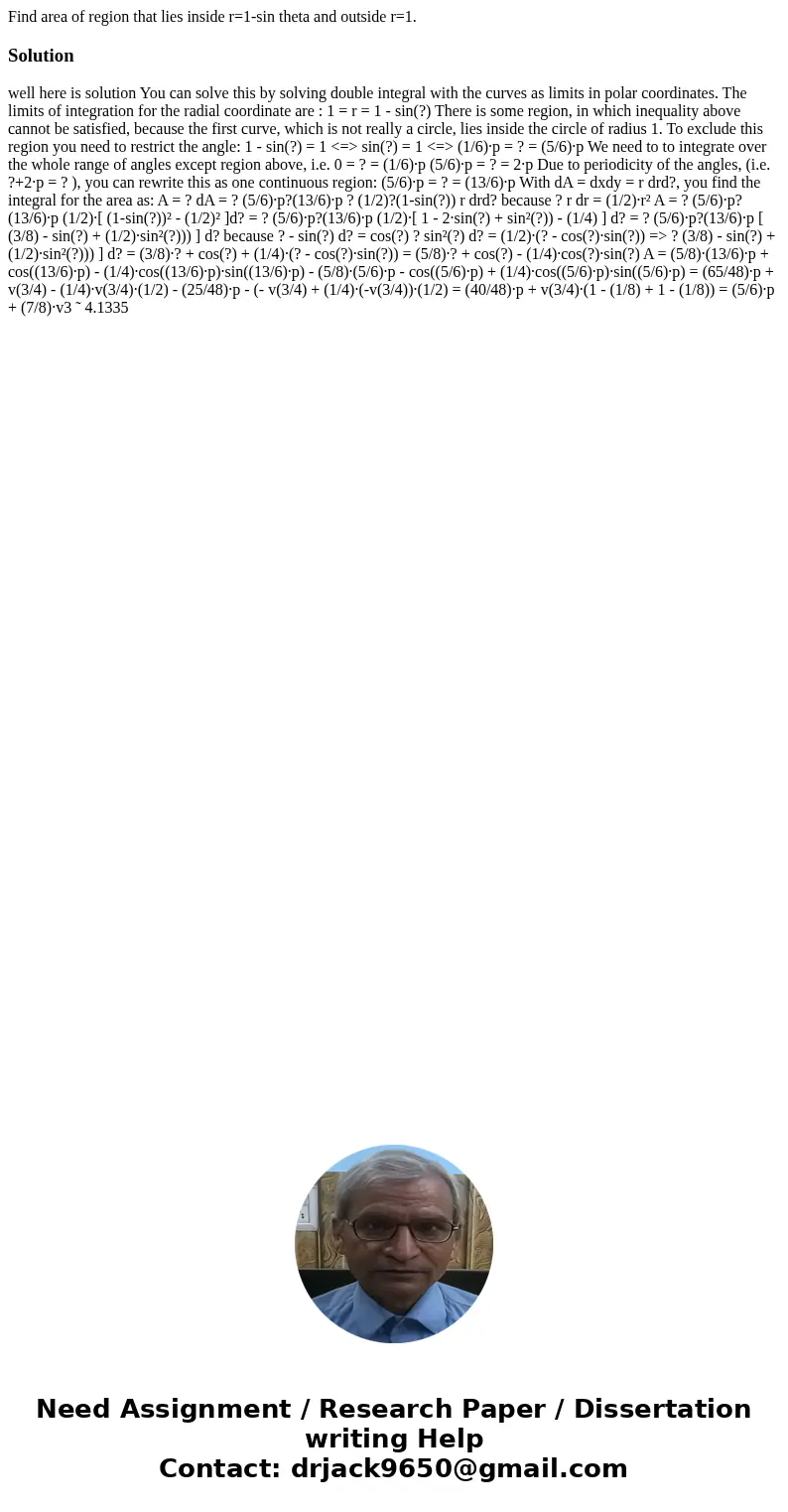Find area of region that lies inside r1sin theta and outside
Find area of region that lies inside r=1-sin theta and outside r=1.
Solution
well here is solution You can solve this by solving double integral with the curves as limits in polar coordinates. The limits of integration for the radial coordinate are : 1 = r = 1 - sin(?) There is some region, in which inequality above cannot be satisfied, because the first curve, which is not really a circle, lies inside the circle of radius 1. To exclude this region you need to restrict the angle: 1 - sin(?) = 1 <=> sin(?) = 1 <=> (1/6)·p = ? = (5/6)·p We need to to integrate over the whole range of angles except region above, i.e. 0 = ? = (1/6)·p (5/6)·p = ? = 2·p Due to periodicity of the angles, (i.e. ?+2·p = ? ), you can rewrite this as one continuous region: (5/6)·p = ? = (13/6)·p With dA = dxdy = r drd?, you find the integral for the area as: A = ? dA = ? (5/6)·p?(13/6)·p ? (1/2)?(1-sin(?)) r drd? because ? r dr = (1/2)·r² A = ? (5/6)·p?(13/6)·p (1/2)·[ (1-sin(?))² - (1/2)² ]d? = ? (5/6)·p?(13/6)·p (1/2)·[ 1 - 2·sin(?) + sin²(?)) - (1/4) ] d? = ? (5/6)·p?(13/6)·p [ (3/8) - sin(?) + (1/2)·sin²(?))) ] d? because ? - sin(?) d? = cos(?) ? sin²(?) d? = (1/2)·(? - cos(?)·sin(?)) => ? (3/8) - sin(?) + (1/2)·sin²(?))) ] d? = (3/8)·? + cos(?) + (1/4)·(? - cos(?)·sin(?)) = (5/8)·? + cos(?) - (1/4)·cos(?)·sin(?) A = (5/8)·(13/6)·p + cos((13/6)·p) - (1/4)·cos((13/6)·p)·sin((13/6)·p) - (5/8)·(5/6)·p - cos((5/6)·p) + (1/4)·cos((5/6)·p)·sin((5/6)·p) = (65/48)·p + v(3/4) - (1/4)·v(3/4)·(1/2) - (25/48)·p - (- v(3/4) + (1/4)·(-v(3/4))·(1/2) = (40/48)·p + v(3/4)·(1 - (1/8) + 1 - (1/8)) = (5/6)·p + (7/8)·v3 ˜ 4.1335
 Homework Sourse
Homework Sourse